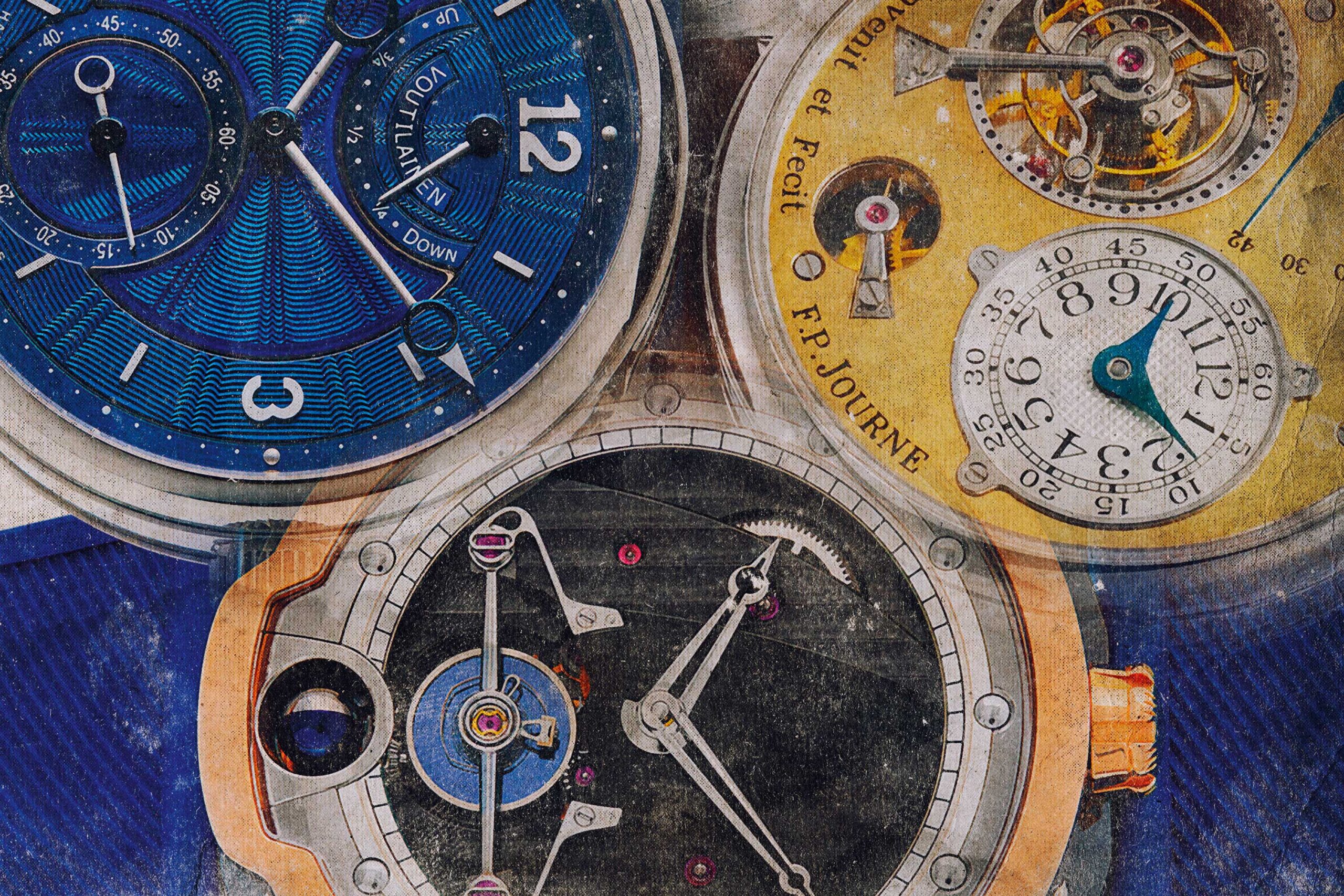Beyond the usual “hype watches,” vintage classics and independent brands, what are the world’s most seasoned collectors looking for? Revolution spoke to some of them to find out.
The one lesson we have learnt over the past two years is that watch collectors have a tendency to hop on board the hype train. To be clear, this isn’t meant as a criticism, but more of an observation on how collectors seem to be drawn to watches that are hot and the must-haves within any given season. Think Royal Oak, Nautilus and Daytona, and you will have a pretty comprehensive overview of some of the watches that have arguably overcooked the pre-owned watch market. Again, let me state my absolute belief that these watches are both important and beautiful. In fact, the post-1988 Rolex Oyster Perpetual Daytona is a watch to which I have devoted countless hours of research and enthusiasm to understanding, and I know many passionate collectors of these watches that could not care less whether they appear on the latest “cop or drop” list. However, things can become a lot of fun when collectors alight from the aforementioned train and look beyond the herd.
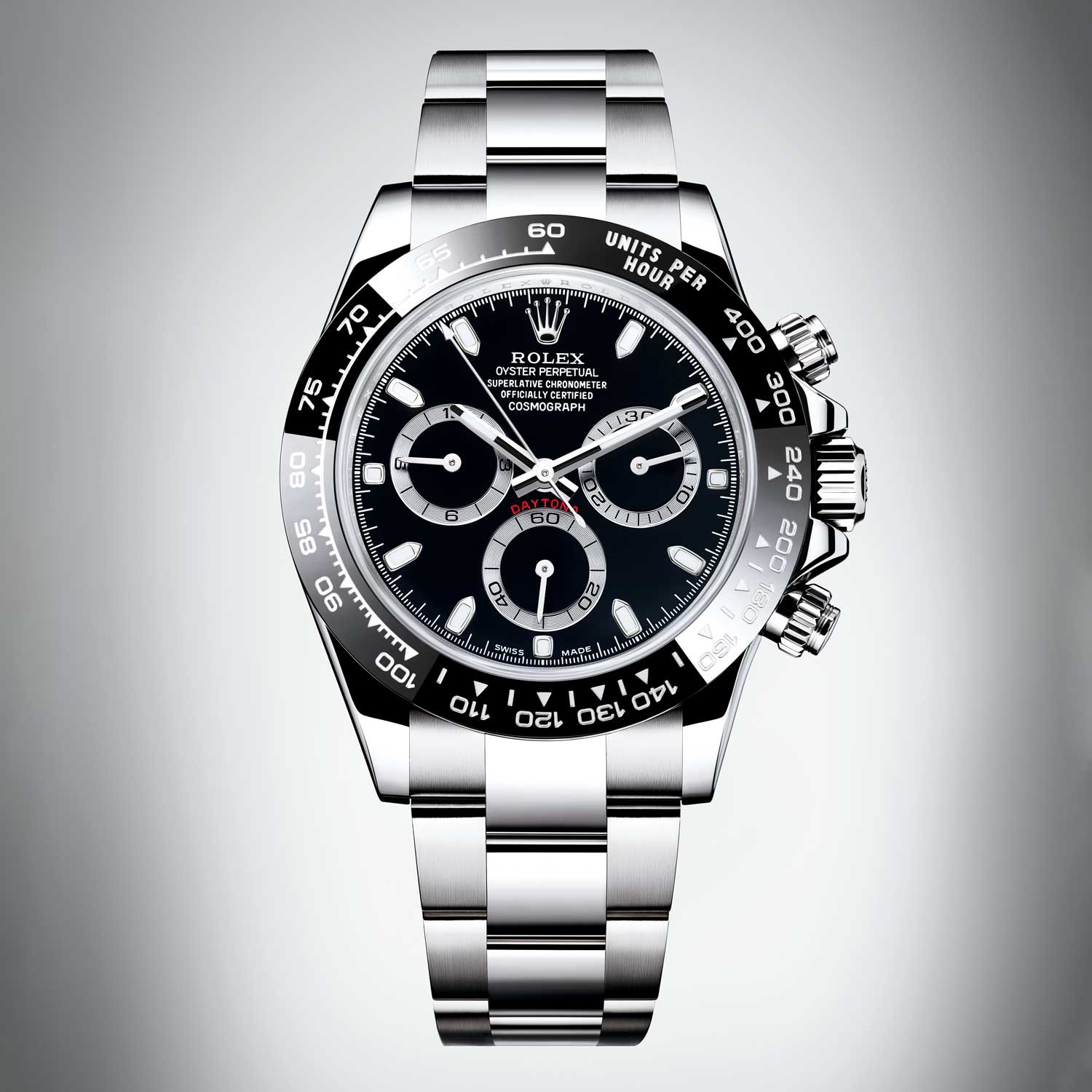
Whilst perennial favorites such as the Daytona will always have a place in the hearts of fans
What is clear is that the sands are shifting and collectors are looking to research, fall in love with and chase new horological quarries. This is my opinion from talking to friends, collectors and dealers but the data also backs this up. The 2022 autumn auction season demonstrated that the once-hot pieces are showing signs of slowing down. Considerably.
Remember the days when a steel Rolex 116500 was USD 50,000. They’re now closer to USD 25,000, which is a 50 percent fall from grace, although it’s still double its retail price. So what are people spending the big bucks on now? Well, for sure vintage is still a strong contender and collectors seem more than willing to shell out when a piece is both rare and in incredible condition. As Monaco Legend Group auction house’s chairman Davide Parmegiani states: “This is now a market for connoisseurs, collectors and those with a passion for rare and high quality watches. What we have demonstrated is that when rarity and quality collide, the market speaks and, in fact, speaks very loudly.”
Modern watches are also popular though, make no mistake. One of the newest areas of collecting is the sector of independent watchmaking, where everything from space-age technology and classical horology is welcome and often collide to produce otherworldly creations that get seasoned collectors hot under the collar. There were a number of stellar results for independent watches, including a 1999 F.P. Journe Souscription Tourbillon that was one of six known with pink gold dials that sold for an impressive USD 1.24 million! There were also strong showings from De Bethune, which now hammer at significantly over retail, and Kari Voutilainen with a unique piece in platinum from 2017 with vibrant guilloche enamel dial that sold for a significant USD 189,000.
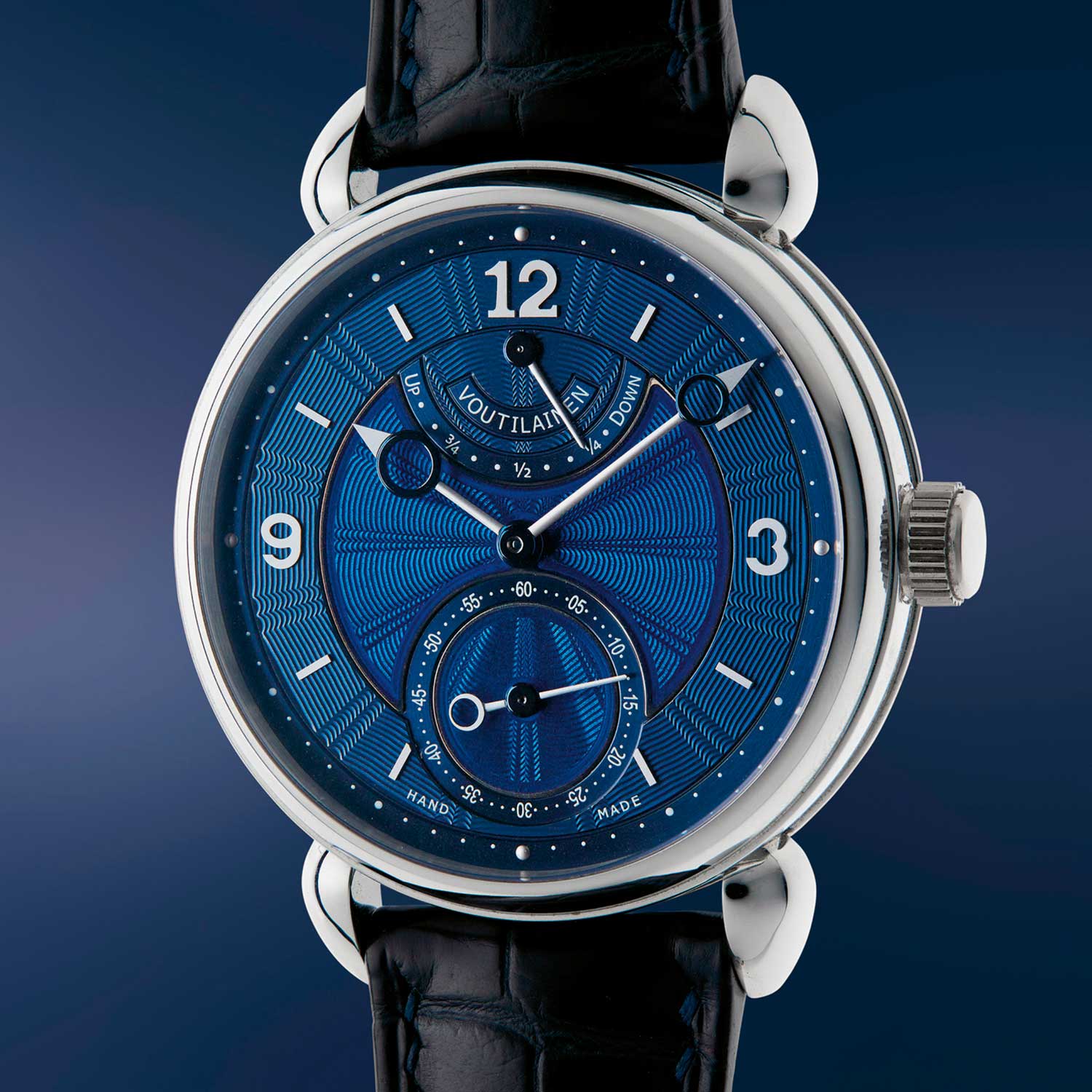
New directions such as a Voutilainen are always welcome
There exists, however, beyond the modern hype watches (I know, I don’t really like this term either), vintage classics and new indies, a world of new discoveries. Brands you haven’t heard of in the watch space, collaborations that will take you by surprise, and models from the stalwarts that you may have only seen in passing. We are going to take a look at some new and emerging trends and talk to some of the industry’s leading lights. Even then, we are only skimming the surface, as there is a seemingly unlimited number of interesting watches out there that are just waiting to be discovered, and hopefully we can inspire a new approach with this piece. Let’s go!
TIME FOR SOMETHING DIFFERENT
I remember quite clearly the first time I wore my Vivienne Westwood denim parachute shirt to a gig in London. It was the late 1990s and the iconic British designer was experimenting with a new label called Anglomania. The pieces in the collection were only available at her Worlds End shop on King’s Road and they were made in very small numbers. I was immediately taken by a then-modern reinterpretation of the original parachute shirts that Westwood had made in the 1970s and acquired one, which I still own today. This was long before the brand became widely known and was franchised across different lines. My friends were bemused by the garment and whilst they were kind about it, thought it was an odd choice of attire. The seed was sown for me to want to be a little off-piste. That trait continued into my love of watches.
It’s hard to imagine now, but in the early 2000s, Tudor was largely forgotten and overlooked. There was a phrase that you never hear any more about them being a “poor man’s Rolex” and aside from the original 1970 “Homeplate” Chronographs, there was very little interest in the brand from the collecting community. I vividly remember one evening being on the Vintage Rolex Forum and noticing blue dial Submariners and unusual, colorful chronographs, and being smitten by the younger sibling of the Coronet. This love for Tudor led to Tudor Collector and, in many ways, me enjoying the career I do now. Again, much like the Anglomania parachute shirt, when I would attend the Rolex Passion Meetings or UK-based collector gatherings, people would eye me suspiciously and with a soupçon of mirth at these tatty old watches (MilSubs actually) that looked a bit like Rolex timepieces. A similar set of circumstances occurred again a decade later when I became obsessed with the Daytona Beach… but this article isn’t just about me!
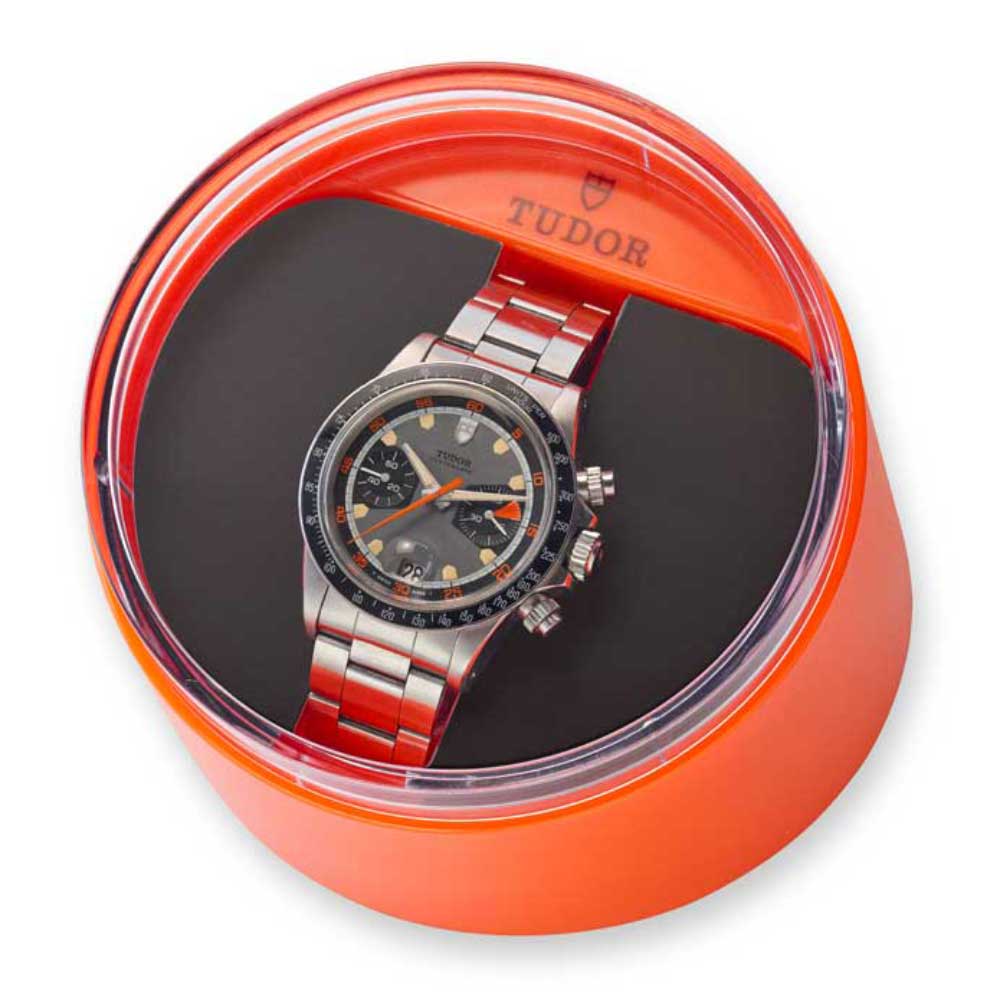
1970 Tudor Oysterdate Homeplate
One passionate Tudor collector and early adopter of the Wilsdorf brand is Paul Russell. The Scottish watch collector has always loved Tudor: “Collecting wasn’t something I ever did as a kid, but as I got older and more aware of design, watches were always the thing to catch my eye. I remember my Dad’s red digital watch from the mid-1970s and the hours of fun under the duvet pressing the button until it broke (sorry, dad). My collecting started in my 20s with my grandfather’s small Tudor, which was a present from Canada and given to me when he passed away. The Tudor bug hit hard and I couldn’t get enough of the numerous detailed articles posted on the Vintage Rolex Forum and the bargains to be had on eBay. The feeling I get from holding a vintage watch has never diminished and I absolutely love the fact that someone took the time to go out and buy this small piece of metal, and just used it to tell the time and not spend hours looking at it as I do. I genuinely love watches in general, but vintage is where my heart will always be, and I’m honored to be a Tudor Collector!”
LONGINES LOVE
It was similar for Revolution’s go-to guy for all things vintage Longines, George Pakkos. When the watch collecting masses were obsessing with remortgaging to snap up “Newman dial” Daytonas, Pakkos was immersed in the 13ZN-driven chronographs of Saint-Imier’s finest. He says, “Initially, I was drawn to vintage Longines as I saw a disparity in the price for many very interesting watches. During the ’30s and ’40s, Longines were one of the top manufacturers for watches, probably only second to Patek Philippe in this period. They were first in class in terms of quality and innovation, whilst having a vast catalog of references, many of which I found to be aesthetically beautiful whilst utilitarian (in essence, real tool watches made for a purpose). This made collecting vintage Longines an extremely desirable proposition to me.”
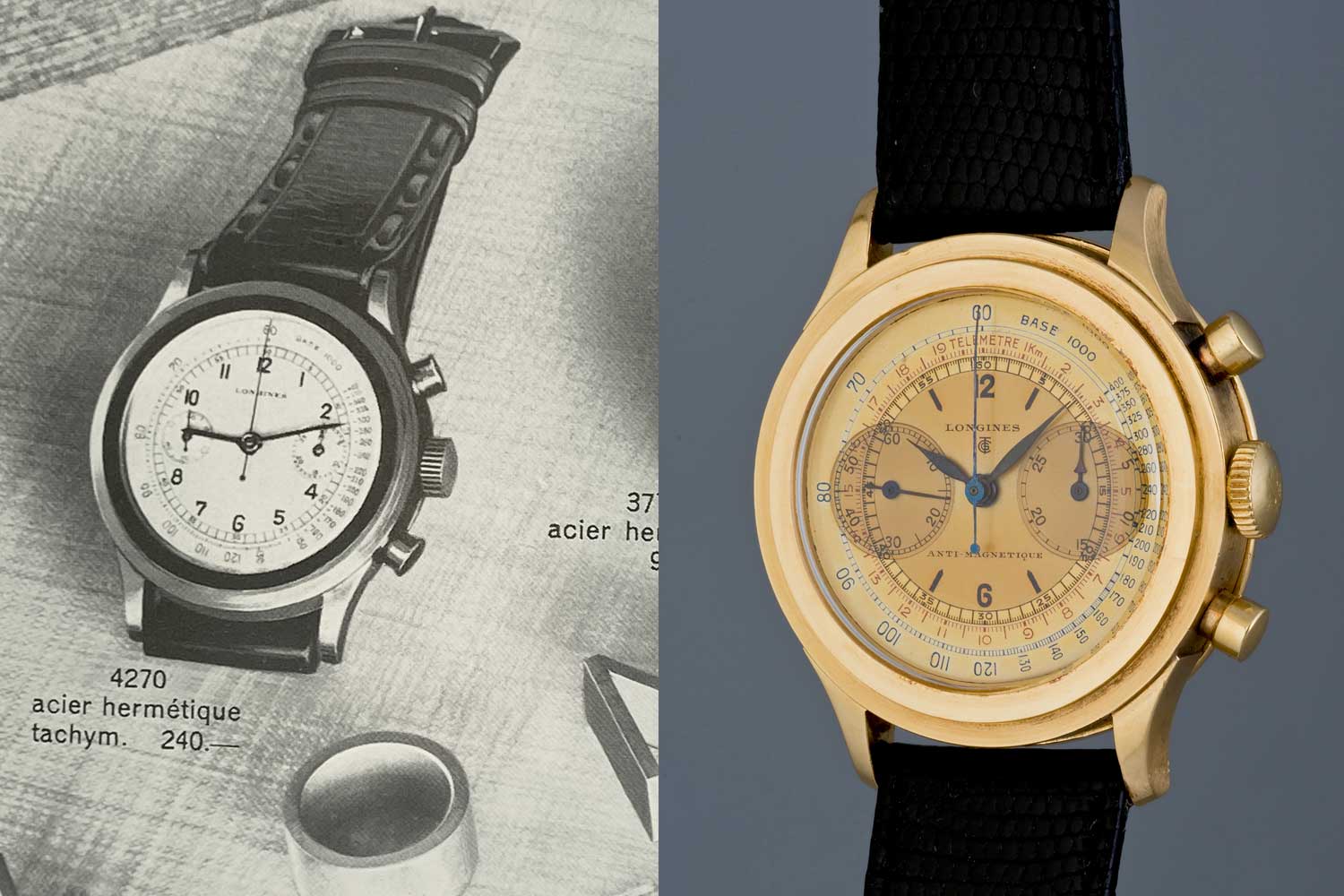
A brace of lovely Longines chronographs
With such a great opportunity to researching and collecting special watches, I asked Pakkos if the vintage Longines collecting community is overcrowded. He replied, “Actually, like vintage watch collecting in general, I’d say vintage Longines collecting was a niche within a niche. However, during the past few years, the Longines collector community has grown exponentially — there is a nice community of enthusiasts from all over the globe. There are many desirable and interesting vintage Longines to collect regardless of budget.” So, what would Pakkos say are the most desirable of all vintage Longines? “The most exciting watches for me are the chronographs, especially those with the caliber 13ZN, and specifically all those with waterproof cases, especially the mushroom pusher, tre tacche and sommatore. Also very exciting are the Lindbergh and Weems (probably some of the most important watches ever made, considering the impact they had on aviation and modern GPS navigation). There are also many exciting watches that have military provenance, like the “Big Indians” and “Serbians”… in short there are probably too many exciting watches for me to list!”
CLASS IN CARTIER
A watch brand that has certainly become mainstream now is Cartier. The feverish way in which high-end collectors now chase the Crash is remarkable and the brand recently relaunched one of its most humble lines, Must de Cartier. Beyond Tanks and Crashes, however, exists a world of weird and wonderful Cartiers with a very loyal following of true aesthetic connoisseurs. When it comes to setting trends, Bernhard Bulang is regarded as one of the best. His early photo-centric blog 100PERCENT-Rolex and subsequent business Bulang and Sons has set the tone for lifestyle-led e-commerce of watches and accessories. 1940s steel stepped-case chronographs, oversized Omega “calatravas” and Tudor MilSubs were all key features of the Bulang and Sons offering before the mainstream adopted them. The same is also true of Cartier. First and foremost, Bulang is a collector and it was exactly the hype around certain high profile watch models that led him down the Cartier path.
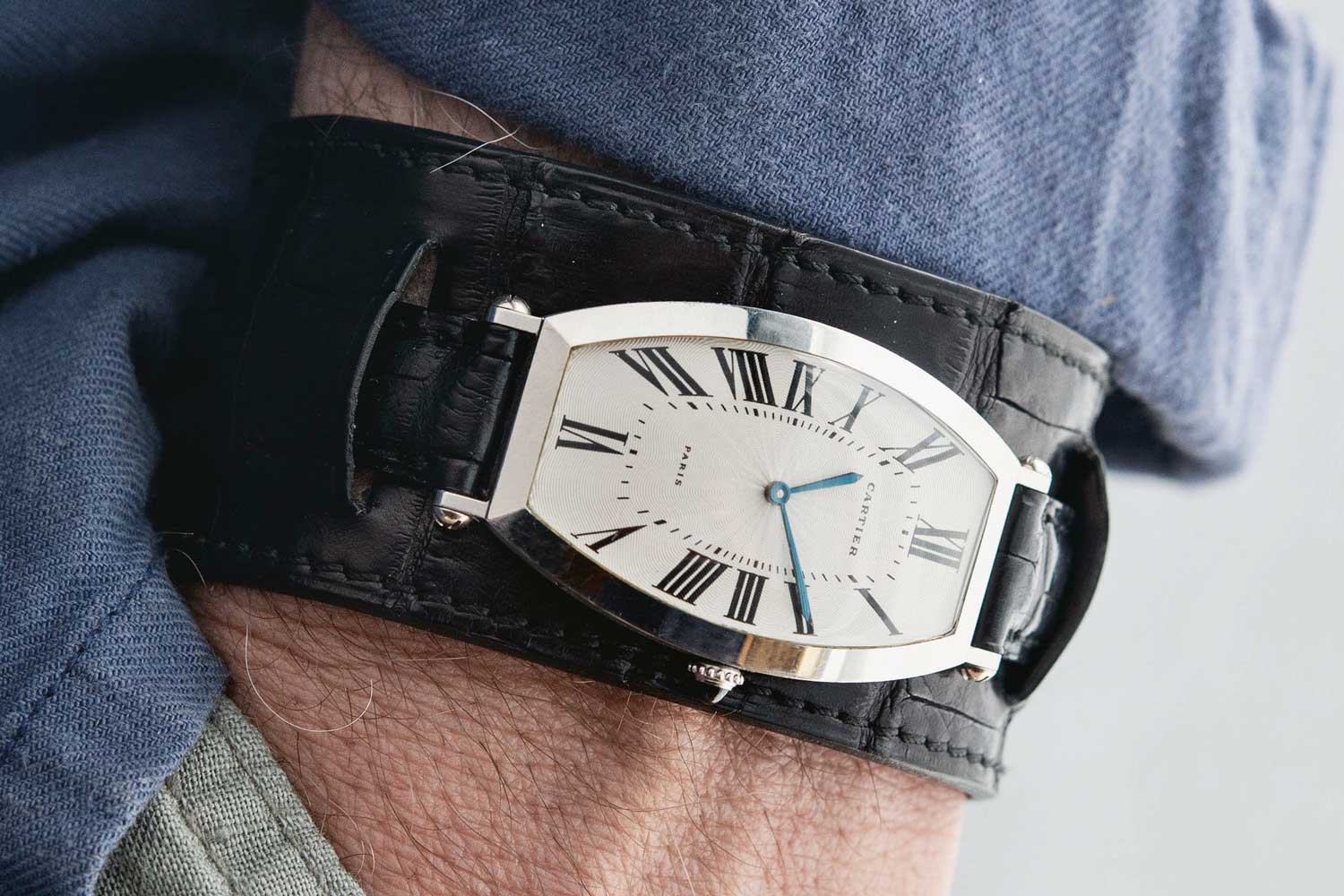
Bulang style for watch lovers — watches and accessories such as this platinum Cartier Tonneau on black leather cuff strap (Image: Bulang and Sons)
He enthuses, “I really love the more funky shapes from Cartier and one of my favorite watches is the Gondole Horizontale Jumbo — a rare beast, a great size and the case shape is so exciting and comfy at the same time. I also love the Cristallor and the Baignoire Allongée in large. These watches have such exciting designs where they become a mixture of a watch and men’s jewelry. I would also say that an ’80s-style Santos is just a great fun buy at a moderate price level, and one high on my list is the Santos-Dumont Ultra Thin. It has such an amazing design — small size, but big impact. Well, it takes big balls to wear small watches!”
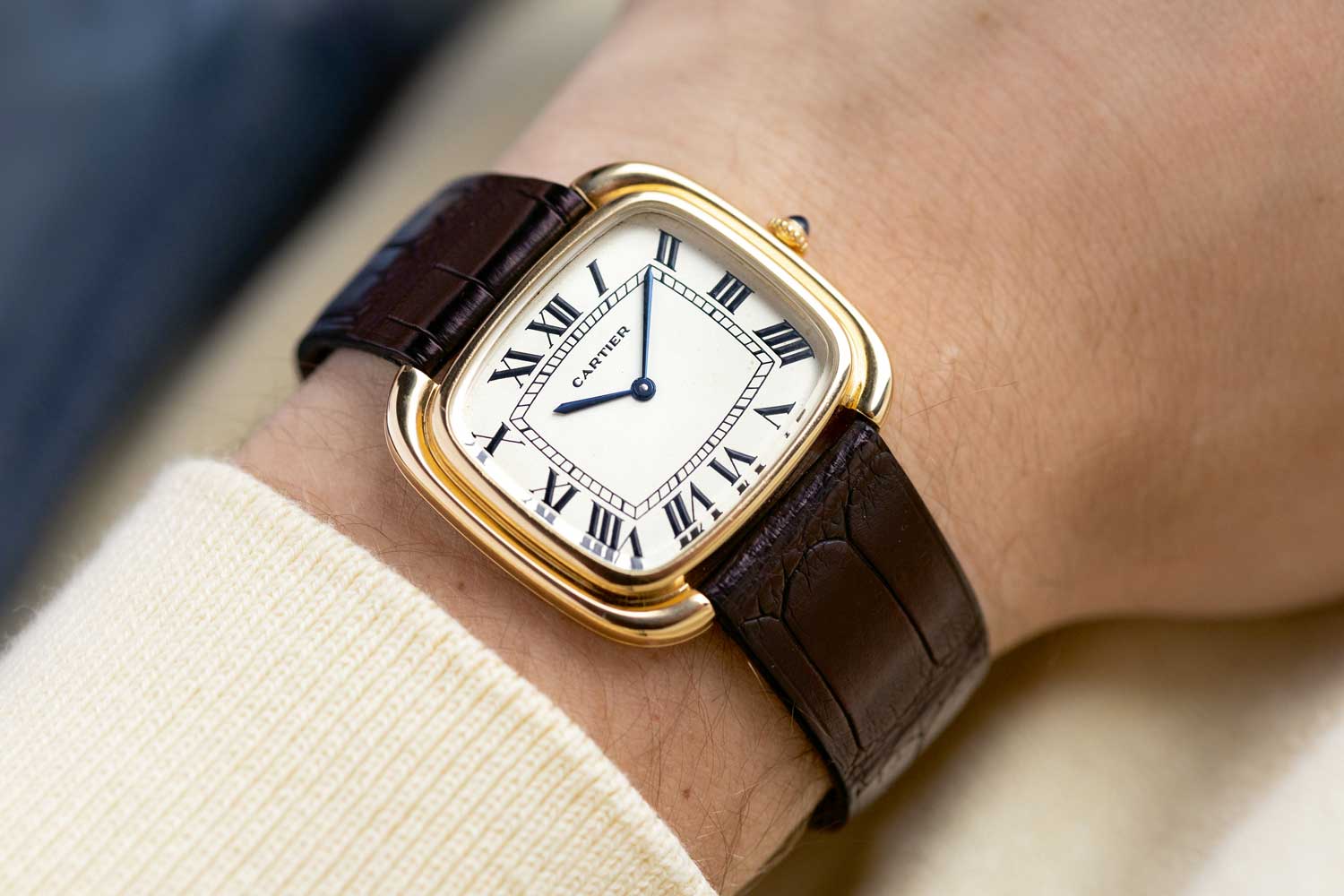
Bernhard Bulang’s Cartier Gondole Horizontale in yellow gold (Image: Bulang and Sons)
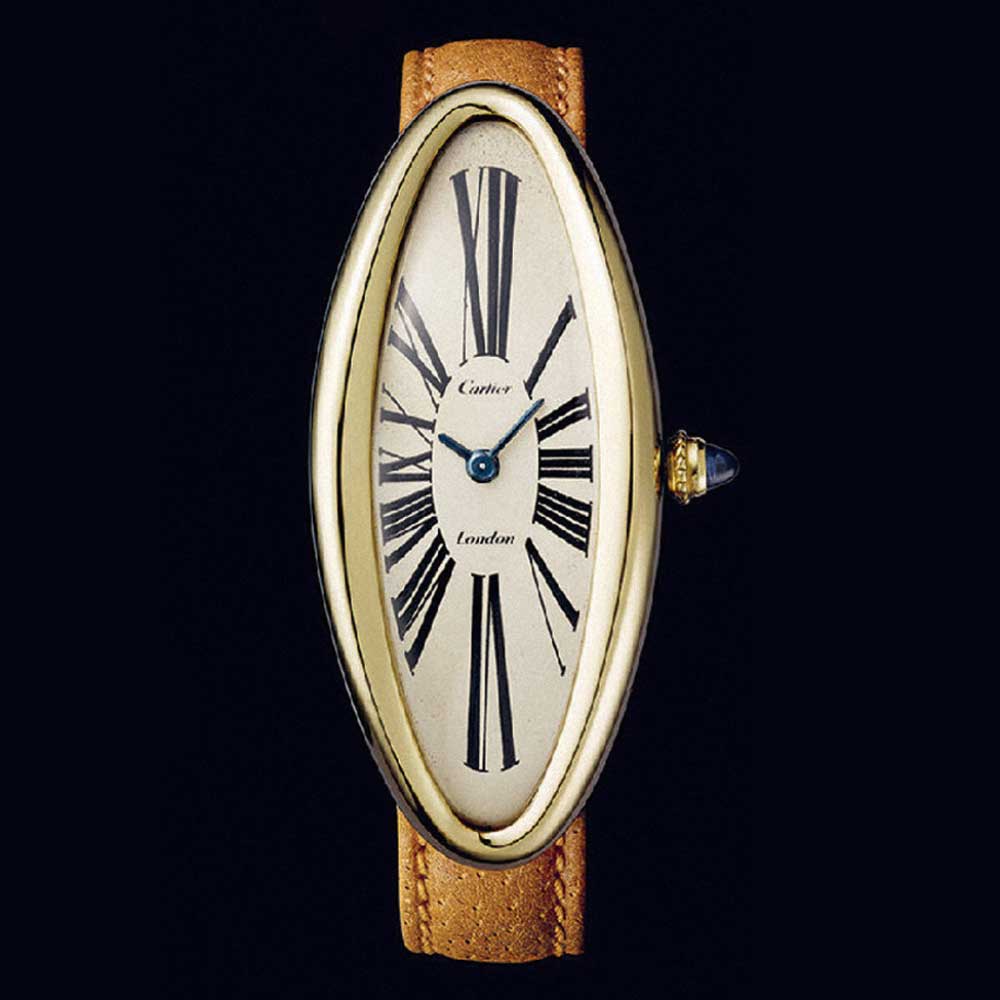
A 1957 Cartier London Baignoire Allongée
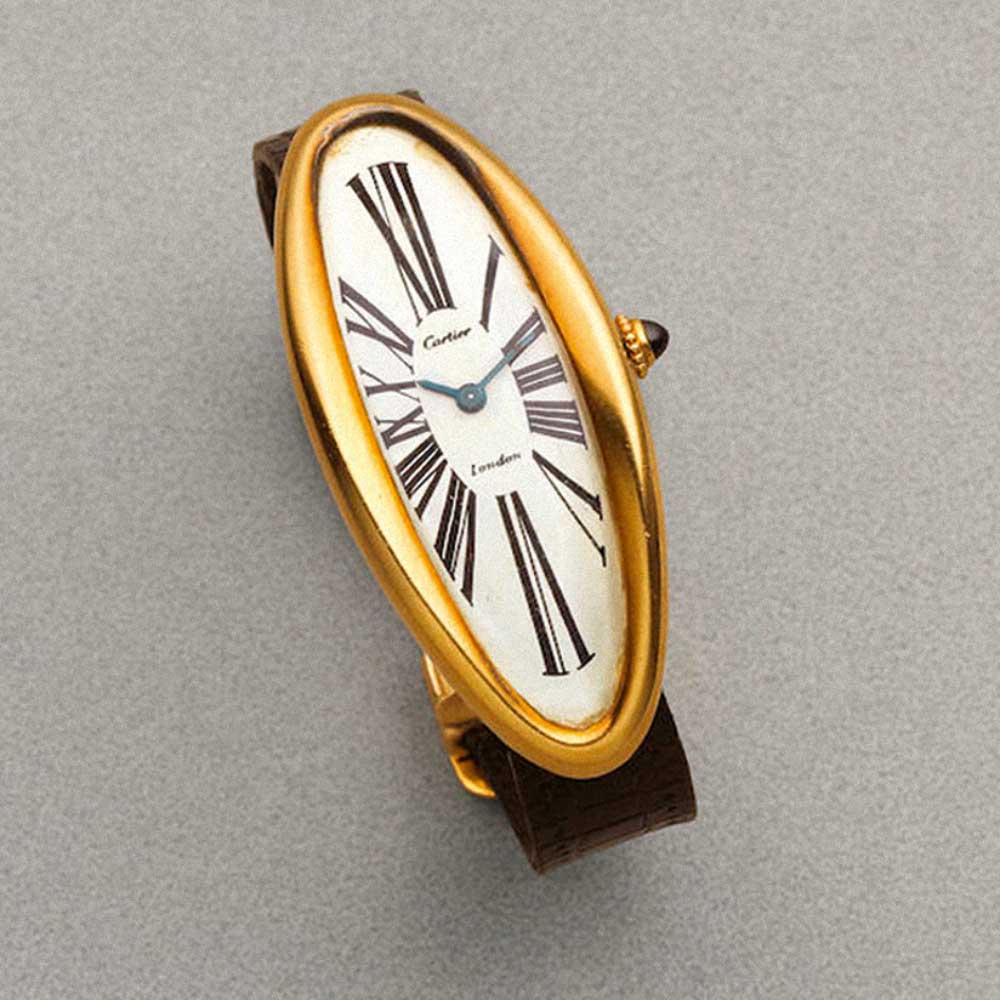
A similar watch from 1969
Bulang has eclectic taste and has always looked beyond the herd for interesting and undiscovered gems. Of his collecting philosophy, he says, “I am driven by the emotion and aesthetics of vintage watches. For me, it’s all about the design, dials, story and emotion of watches. After years of hunting my grail Rolex watches, I am now more focused on finding a watch that pushes me forward towards new styles and aesthetics. I am always on the hunt for ‘pleasant friction’: wearing great designed watches outside their cliché and combining them with straps that change the vibe; combining them with fashion that also makes them more interesting; not confirming the clichés but opening new ‘questions.’ It is an exciting road with discovery of many new styles to me and love for watches I would not have been picking up years ago — beauties by Vacheron, Audemars Piguet, Cartier and Gérald Genta. Finding classic designs that are almost 100 years old by Cartier and using them in a contemporary lifestyle, I am in love with how they are still relevant today and add so much mojo on your wrist. A Patek 3940 that years ago I would have felt as boring, bourgeois… I now feel it is one of the most exciting watches, combined with some sporty or elegant straps. The dial design is magically balanced for a watch with so much info. Amazing and timeless.”
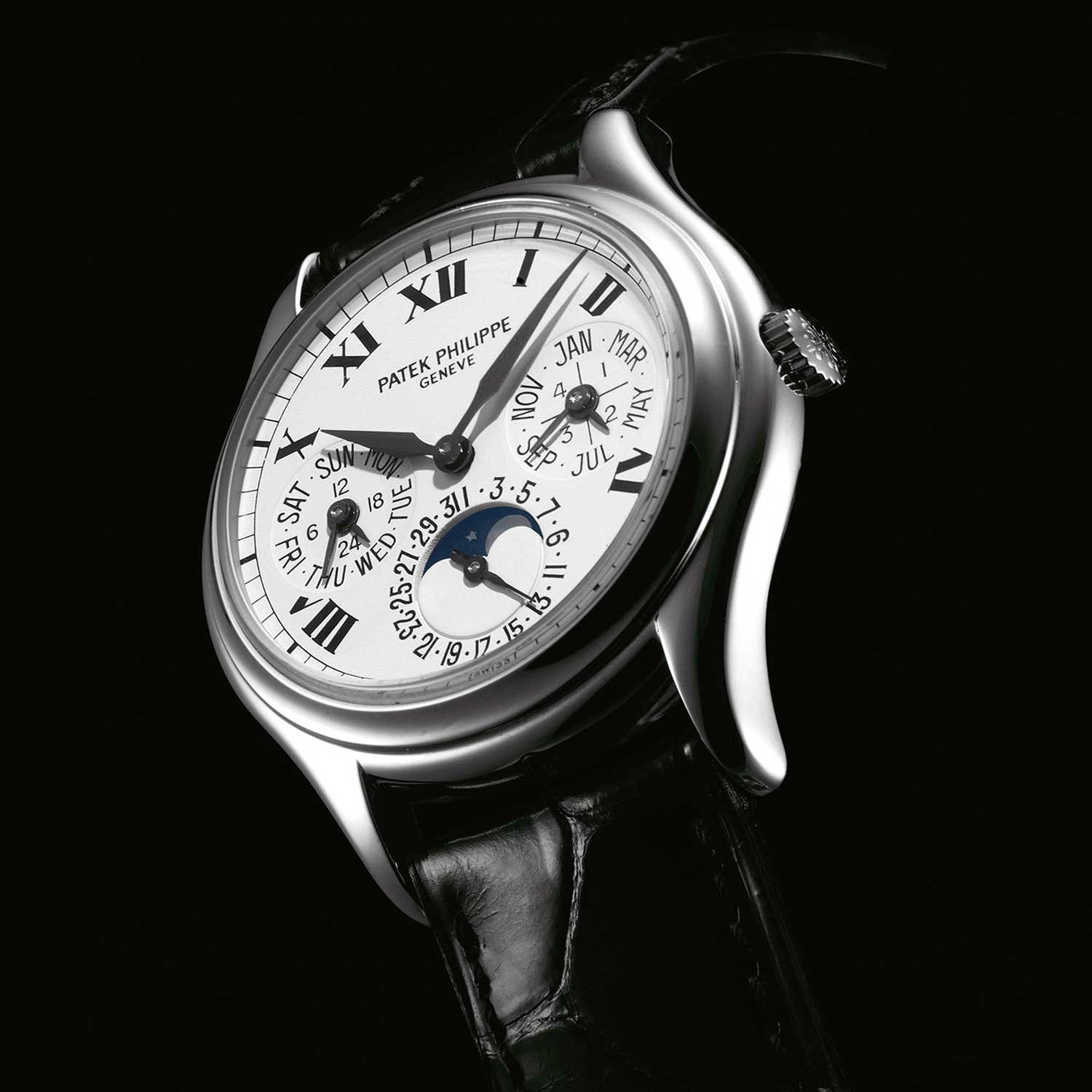
A rare Patek Philippe ref. 3940 in platinum
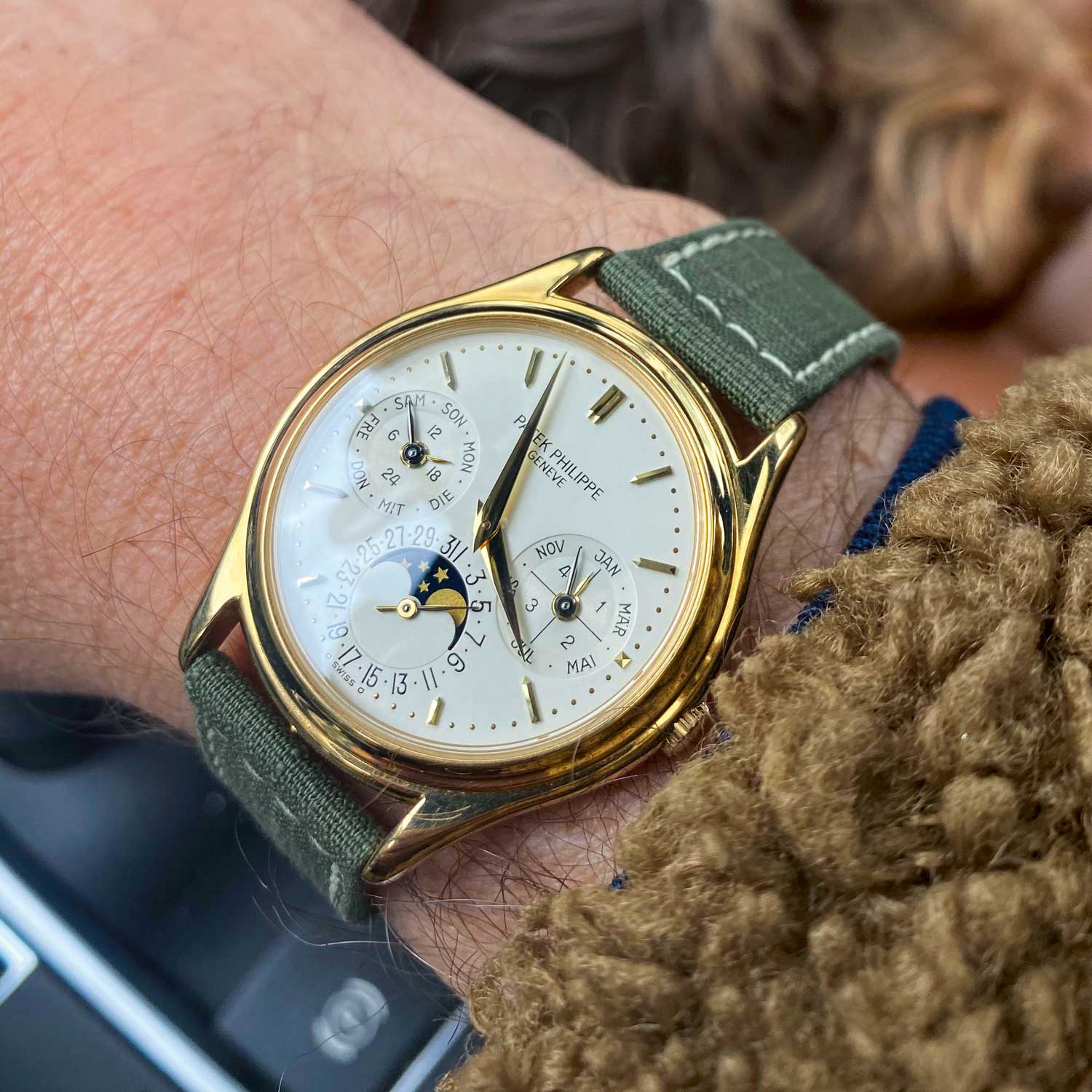
Another increasingly sought-after timepiece, a Patek Philippe ref. 3940 exudes sporty elegance when paired with a military-style green textile strap
A DREAMER FOR GRIMER
Bulang is also a fan of the space-age Omega watches conceived for the brand by British designer Andrew Grima. Grima is regarded as one of the most important jewelry designers from the 1960s and ’70s, and boasted a Mayfair boutique on Jermyn Street. His impressive client list included both Queen Elizabeth II and Princess Margaret who were drawn to his beautiful bespoke creations.
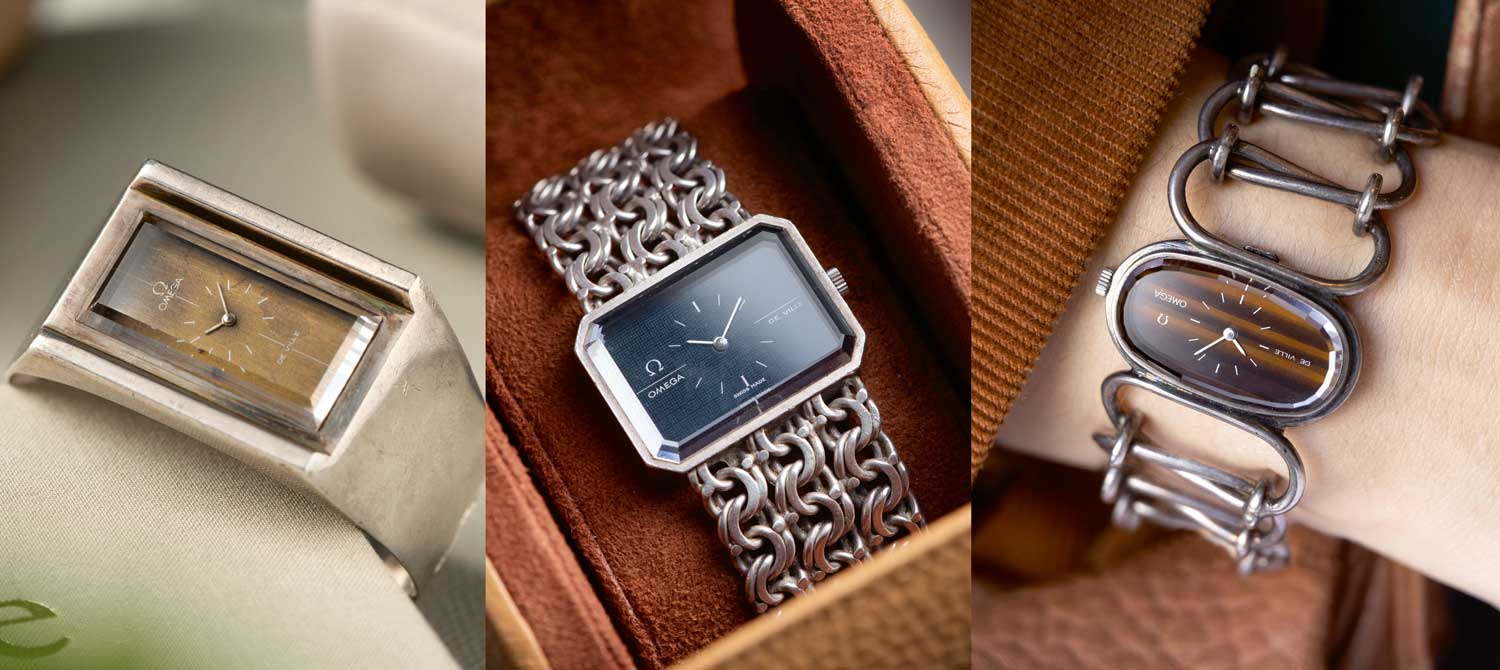
Three interesting and unusual Omega watches inspired by the designs of British designer Andrew Grima (Image: Bulang and Sons)
Says Bulang, “Omega’s director of production Robert Forster commissioned Grima to design a collection of watches. I don’t think he was keen initially. Grima was eventually persuaded but had a list of stipulations that he insisted be part of the deal. The first, and in today’s market the most unbelievable, was that the watches were not to feature either name of the two brands involved — Grima or Omega. Secondly, each piece was to be handmade in London and then taken to Switzerland to Omega’s headquarters in Bienne for the movements to be fitted. The movement fittings had to be done collaboratively between Grima’s artisan jewelers and the technicians at Omega. These watches were the About Time collection, and then later in the 1970s, Omega launched a range of watches inspired by Grima’s work. The Time in Style series of watches were more affordable and marketed through the De Ville, Constellation and Jeux d’Or ranges. Unlike the original Grima series, the Time in Style watches did, in fact, have Omega on the dials, more conventional dial layouts, including hour markers, and were entirely made in the Omega factory. I love these cool watches and we have offered a few of them over the years.”
WHEN AN ESPACE IS PC
Another new emergence amongst collectors is Pierre Cardin, and specifically those pieces made with Jaeger in the 1970s, known as the Espace collection. In 1971, Pierre Cardin launched the Espace watch line, an unconventional portfolio of unisex wristwatches with incredible packaging at good retail prices. Pierre Cardin, for the first time, offered stainless steel and plastic watches with avant-garde and futuristic design that housed good mechanical movements at reasonable prices. Those of you that follow John Goldberger’s second account, @montanariauro, will have seen some of the Jaeger-powered Cardin watches that he shared on his feed last year. Goldberger explains why he loves these watches so much: “The dials had a modern and stylized graphics layout. They are well manufactured by Jaeger, France, and represented an interesting period of the French lifestyle: innovative clothing, car designing and the first traveling by supersonic aviation with the Concorde. The result is a fresh combination of the current fashion trends of the ’70s and timeless aesthetics. His impact on the world of watch design was very important and today the collectors appreciate these unique timepieces with unusual and futuristic shapes.”
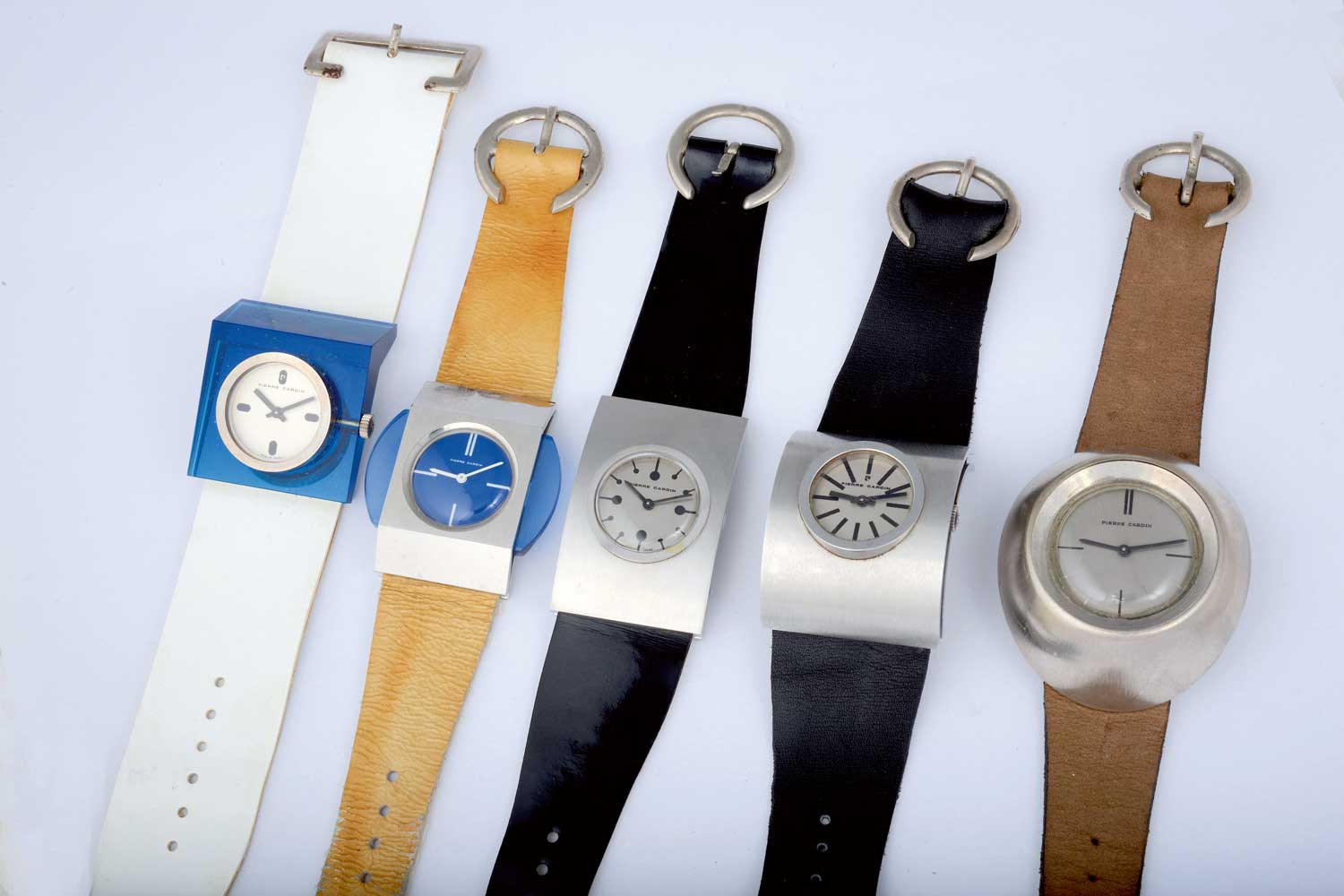
Espace dream — highlights from the John Goldberger collection of Pierre Cardin watches
London-based watch dealer Alex Stevens is a man who knows what he likes and sells timepieces that reflect his own love. Those that know him, therefore, were not surprised by his recent foray into the ’70s Pierre Cardin watches. I was at a lunch with him at the end of last year and couldn’t resist asking about them. He tells me, “I just love them because they are so different and unlike anything else that’s out there at the moment.” Fair enough, I say, but how on earth did he ever discover them? To that, Stevens replies, “I first saw one only around two years ago. I’d been interested in and involved in vintage watches for around 10 years. I was at one of my usual watch fairs and there was an older chap there who had a small collection of Pierre Cardin watches. There are literally thousands and thousands of watches at a vintage watch fair, but for some reason they just called out to me, and I had to take a closer look at them and they just captivated me. It was almost like it wasn’t a watch and more like a little piece of sculpture. They’re so unique and imaginative and there is almost no other watch like them, especially when you consider the resin and lucite cases and especially the colored ones, the triangular ones or the circular stepped examples. For me, it was just so refreshing to see something that I hadn’t seen before. I must admit, it’s not the most practical watch to wear, but it’s certainly a statement piece. I also believe that the vintage watch market has become quite saturated with the amount of content that’s out there — on YouTube, Instagram and blogs — but you do tend to see the same types of watches over and over again. In my mind, it’s really refreshing to see something that you haven’t seen before and is actually interesting from a collectibility point of view. They made 26 variations, so they’re really collectible from that point of view and certain ones are easier than others to find. They capture that time period so well in such a funky way; so space age! Interestingly, Pierre Cardin did fashion designs, in that era, related to the space age, and NASA space suits, including a campaign for them.”
Does Alex see Pierre Cardin watches catching on with mainstream collectors? He says, “I think after collecting for some time, many people naturally start to look elsewhere and people’s tastes change. The times that I have posted Pierre Cardin watches on my Instagram, the amount of interest that there was absolutely blew me away and the amount of love that they got from people, not only from those who knew about them and were aware of them and were maybe hoping to buy one, but also from people who’ve never seen them before.”
BUY WHAT YOU LOVE
One area of collecting that has recently taken center stage is neo-vintage. Loosely, the term defines the era of watches from the late 1980s to early 2000s when the classical styling of many watch lines was supplemented by modern watchmaking technology. Think sapphire crystals, ungraded movements and Super-LumiNova, and you’ll get a feeling for watches that can be worn daily yet have all the aesthetic grace of their forefathers. UK-based watch dealer Ben Dunn of Watch Brothers London (WBLDN) has settled on this genre as his focus.
He says, “I only buy what I like and this links back to why I started dealing in the first place — I want to wear and experience all the watches that catch my eye. This approach has gradually positioned WBLDN with an interesting niche, somewhat based around neo-vintage complications but also offbeat sports models such as the Rolex King Midas or the first-generation Vacheron Constantin Overseas. One thing to call out here is that the market, currently, for these types of pieces is significantly smaller than, say, your typical modern market. However, it’s growing rapidly as more scholarship comes to light. Connecting and providing value to collectors in this era of watches is where I spend a significant amount of time and I invest very happily in this. The friendships built and connections made are the true joy to buying and selling; it’s a community that I’m proud and humbled to be a part of.”
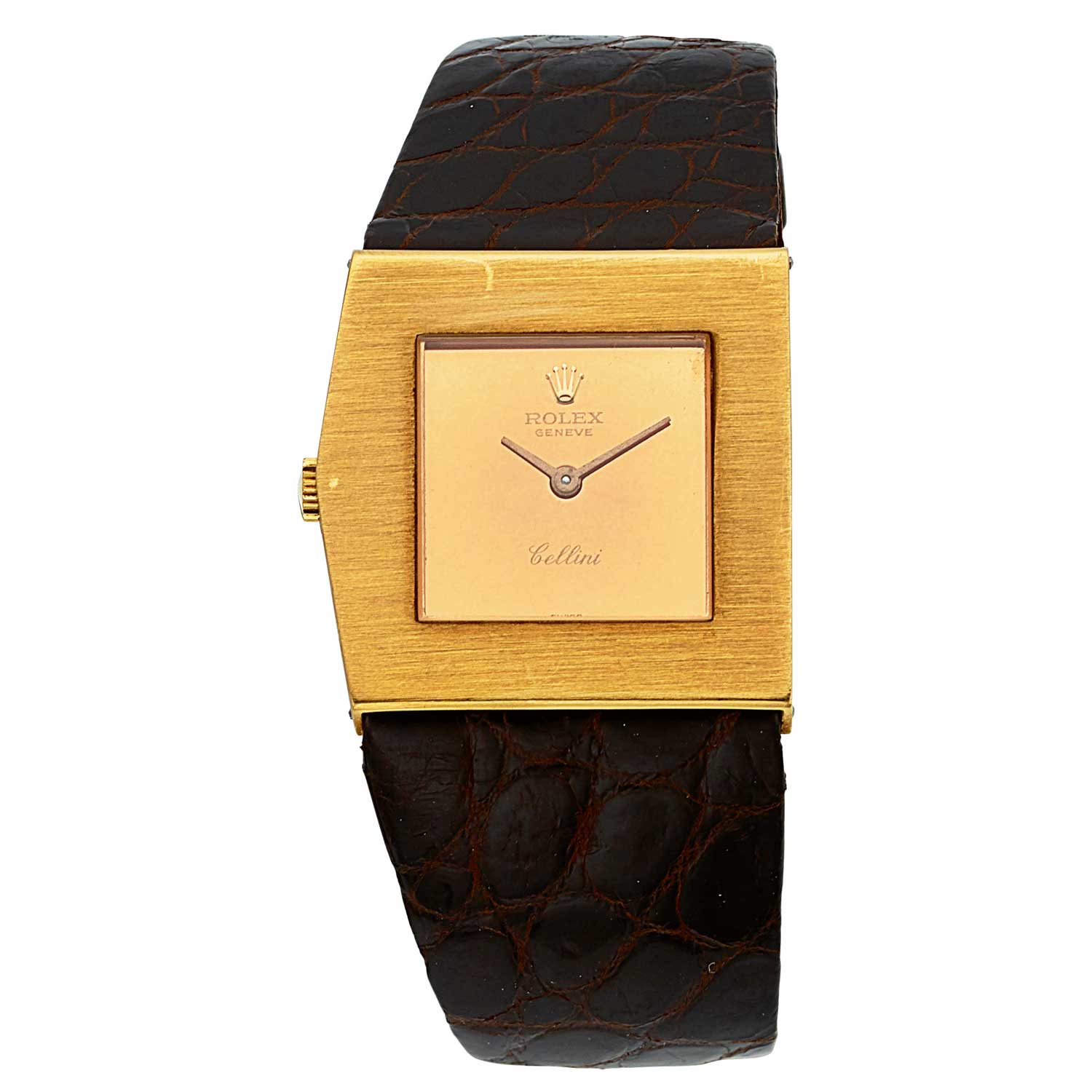
Rolex Cellini King Midas reference 4017 (Image: Heritage Auctions)
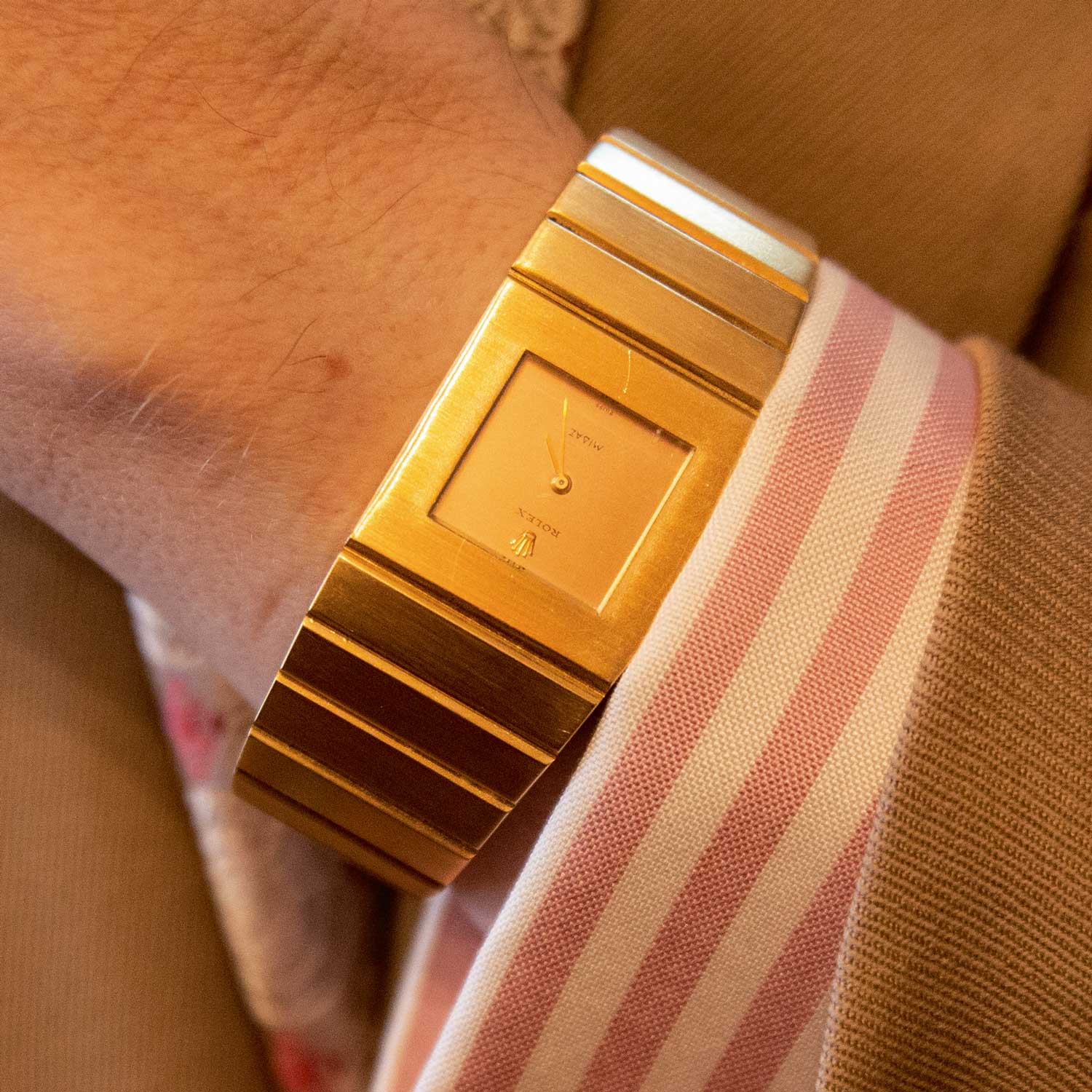
A Rolex King Midas ref. 9630 owned by acclaimed watch journalist Nick Foulkes (©Revolution)
There really is a world of endless opportunities out there for collectors to enjoy. Education is a vital element alongside the quest to unearth new and interesting, or even overlooked, watches. The guys at A Collected Man get this: “This current climate also presents an opportunity to bring back education, discovery and purer enjoyment to what should be a passion-led field. There’s an opportunity to buy watches because they’re interesting and enjoyable, rather than because they’re expected to increase in value. Some areas which still offer fantastic value and quality are neo-vintage Vacheron Constantin, early Breguet wristwatches and more under-the-radar Patek Philippe watches, such as the Ellipse or variants of the Calatrava. Indeed, we’re still seeing some very strong activity in areas such as independent watchmaking, complicated Patek Philippe, neo-vintage Cartier and early A. Lange & Söhne, just to name a few. True rarity, rather than artificially created rarity, and quality seem to remain strongly desirable. Some collectors appear to be refocusing their interest on areas which they see as safer stores of value, in more uncertain times.”
If you look beyond the obvious and actually buy what you like, then it doesn’t really matter if a watch goes up or, heaven forbid, down in value because investment isn’t the paramount consideration of an acquisition. That’s the key to this; we should all enjoy collecting watches that make us smile!


















